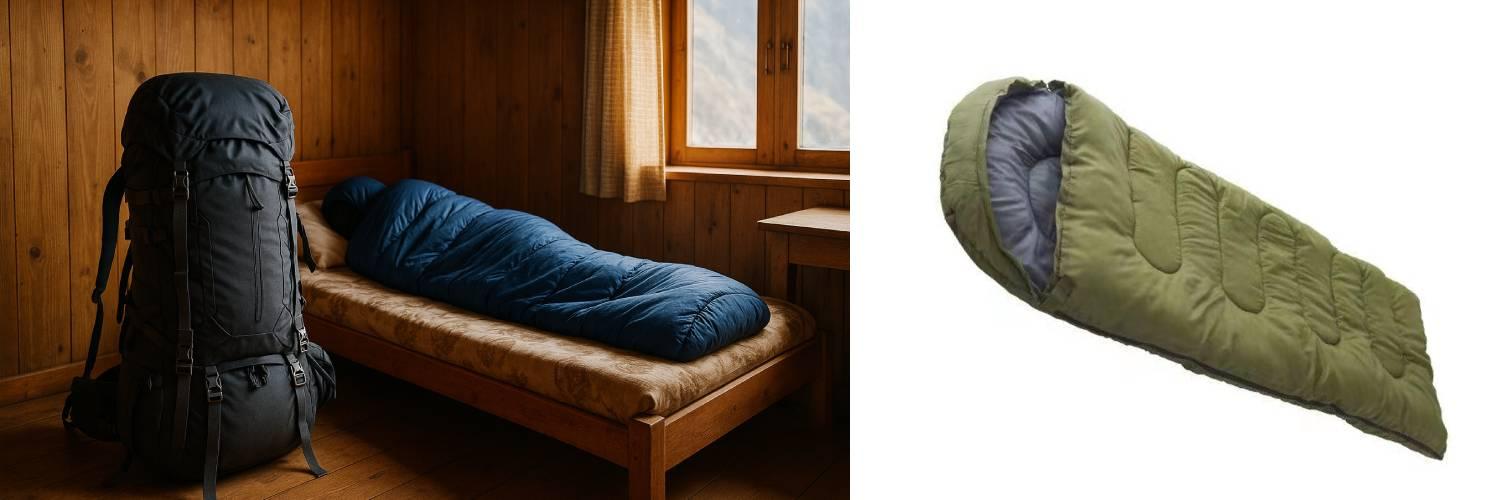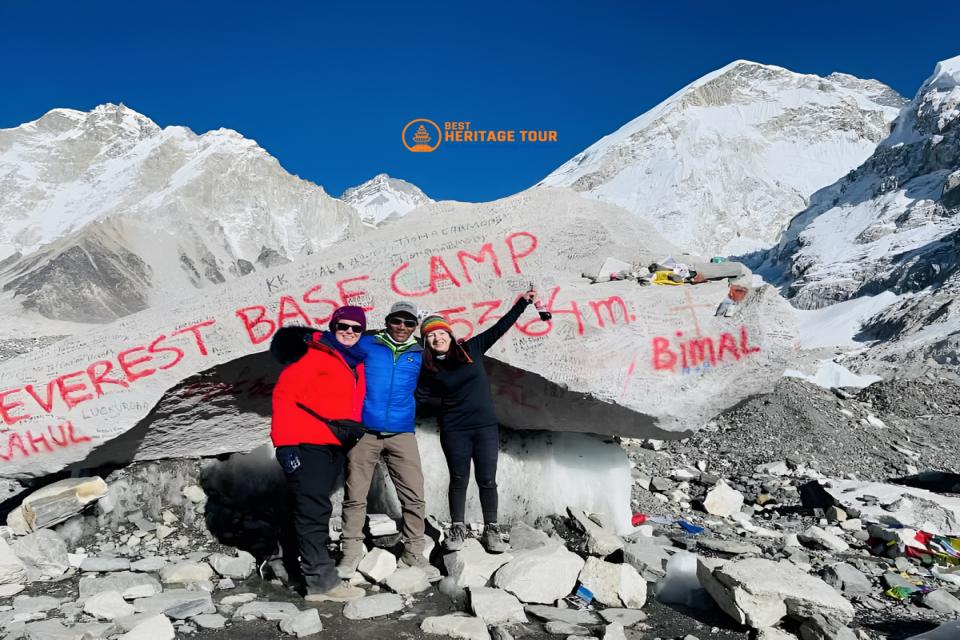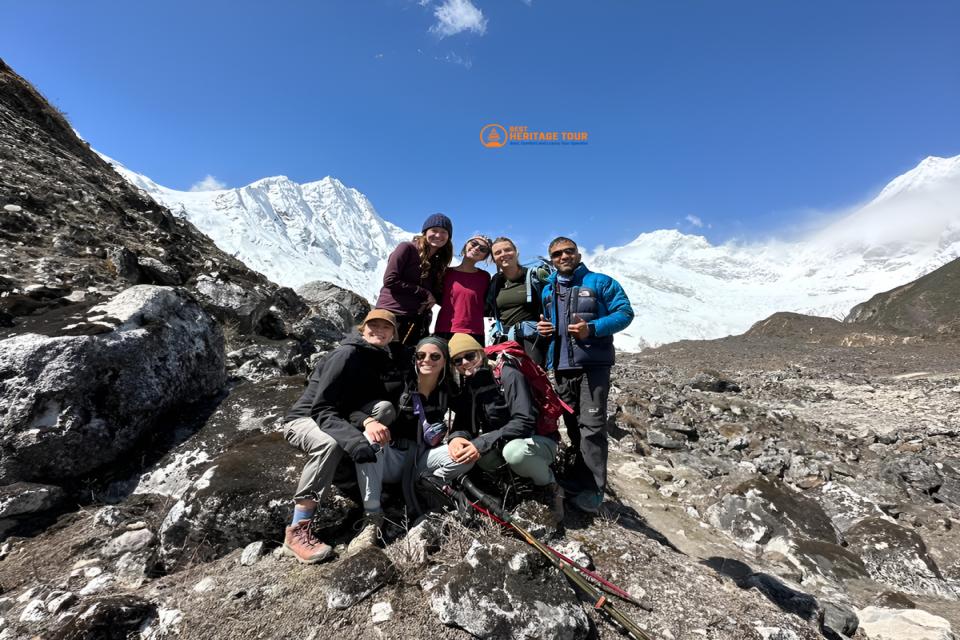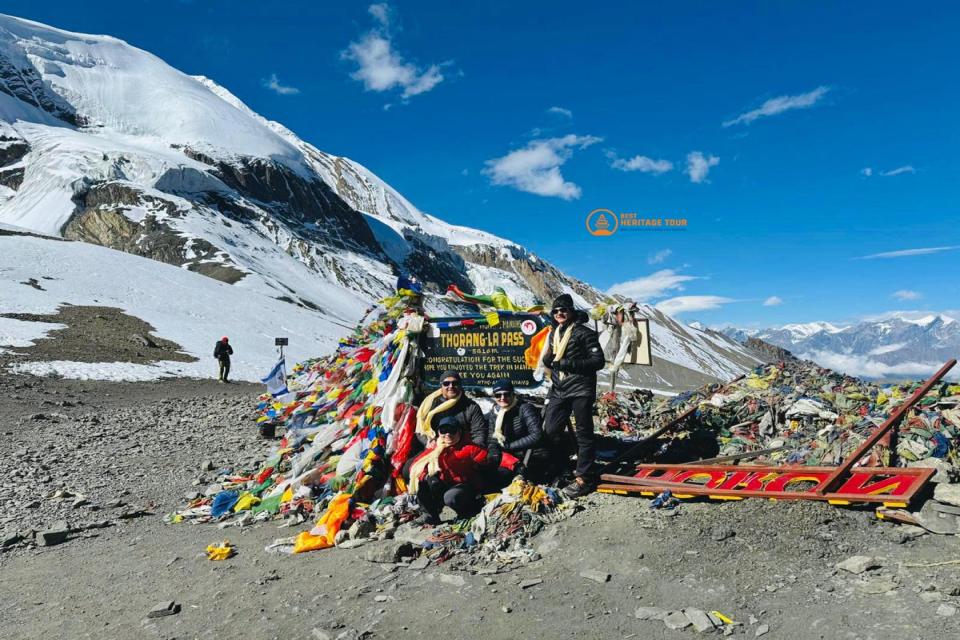Trekking in Nepal is a dream adventure for many travelers and adventure seekers. From the Annapurna Circuit to the Everest Base Camp, the country offers stunning landscapes, rich culture, and challenging trails. However, trekking in the Himalayas isn’t just about scenic views and physical endurance - it’s also about staying safe and comfortable in harsh environments. One of the most critical pieces of gear for trekkers is a reliable sleeping bag.
A good sleeping bag ensures warmth, comfort, and protection against the cold, especially at high altitudes where temperatures can drop well below freezing. Each trekking region in Nepal has its own weather patterns and temperature ranges, so choosing the right sleeping bag depends on your destination, altitude, and personal comfort needs. While Best Heritage Tour guides provide support and advice on gear, having the right sleeping bag tailored to your trek can make a huge difference in your overall experience.
This guide will help you understand the factors to consider, types of sleeping bags, and recommended options for trekking in Nepal.
Why the Right Sleeping Bag Matters
High-altitude treks in Nepal often involve cold nights, wind, and fluctuating weather. Sleeping in inadequate gear can lead to poor rest, discomfort, and even health issues such as hypothermia. A properly selected sleeping bag:
-
Keeps You Warm: Maintains body heat in sub-zero conditions.
-
Provides Comfort: Reduces stiffness and fatigue from a hard or uneven sleeping surface.
-
Protects Against Moisture: Some sleeping bags have water-resistant or synthetic materials to handle condensation or humidity.
-
Supports Health: Proper insulation prevents cold-related illnesses and ensures restful sleep.
For trekkers aiming for long-term safety and comfort, investing in a quality sleeping bag is as important as boots, jackets, and backpacks.
Factors to Consider When Choosing a Sleeping Bag
Choosing the right sleeping bag involves assessing temperature rating, insulation type, shape, weight, and packability. Here’s a detailed breakdown:
1. Temperature Rating
-
Sleeping bags are rated for comfort, lower limit, and extreme temperatures.
-
Comfort Rating: Ideal for average conditions; ensures most people sleep comfortably.
-
Lower Limit: The lowest temperature you can tolerate while sleeping safely.
-
Extreme Rating: Survival threshold; may be uncomfortable for extended use.
-
Check the expected temperatures of your trekking region:
-
Everest Base Camp: -15°C to -5°C at night in winter.
-
Annapurna Circuit: -5°C to 5°C in colder months.
-
Lower Altitude Treks (Langtang, Ghorepani): 0°C to 10°C at night.
-
Selecting a sleeping bag slightly warmer than the expected temperatures ensures safety and comfort.
2. Insulation Type
Sleeping bags are primarily insulated with either down or synthetic materials:
-
Down Insulation:
-
Lightweight, compressible, and extremely warm.
-
Best for dry and cold conditions.
-
Less effective when wet unless treated with water-resistant coating.
-
-
Synthetic Insulation:
-
Retains warmth even when damp.
-
Durable and more affordable.
-
Slightly heavier and bulkier than down.
-
For high-altitude Himalayan treks, down insulation is preferred for extreme cold, but synthetic bags work well for mid-altitude or wetter regions.
3. Sleeping Bag Shape
-
Mummy Bags: Tapered at the feet; excellent heat retention, ideal for high-altitude trekking.
-
Rectangular Bags: More room to move; suitable for lower altitudes or casual camping.
-
Semi-Rectangular or Barrel Shape: Compromise between warmth and mobility.
High-altitude trekkers usually prefer mummy-shaped bags for maximum insulation.
4. Weight and Packability
-
Lightweight sleeping bags are essential for long treks.
-
Down-insulated bags compress smaller and fit easily in backpacks.
-
Synthetic bags may take more space but offer reliable warmth in wet conditions.
-
Consider carrying a compression sack for easy packing and transport.
5. Material and Lining
-
Outer Shell: Water-resistant or ripstop nylon prevents moisture and tears.
-
Inner Lining: Soft polyester or cotton blend improves comfort and breathability.
-
Some bags come with antimicrobial or quick-dry linings to prevent odor and mold.
6. Zippers and Features
-
Full-length zippers make it easy to enter and exit.
-
Draft tubes prevent heat loss along zipper lines.
-
Hooded sleeping bags retain heat around the head and neck.
-
Internal pockets are handy for storing small items like a headlamp or mobile device.
Layering and Sleeping Bag Accessories
Even the best sleeping bag can be enhanced with additional layers and accessories:
-
Sleeping Bag Liners: Add extra warmth, keep your bag clean, and can be washed easily.
-
Insulating Pads or Mats: Protect against cold and uneven ground; foam or inflatable pads add comfort.
-
Compression Sacks: Reduce pack size and keep your sleeping bag organized.
-
Dry Bags: Protect your sleeping bag from moisture during rain or snow.
Layering your sleeping bag with a liner or mat is particularly important for high-altitude treks above 4,000 meters, where ground temperature can be extreme.
Regional Considerations for Nepal Treks
Different trekking regions in Nepal have unique weather patterns, and your sleeping bag choice should reflect this:
-
Everest Region: Cold nights, strong winds, and snow. Down sleeping bags rated -15°C or lower are ideal.
-
Annapurna Circuit: Variable weather; lightweight down or high-quality synthetic sleeping bags rated -5°C to -10°C are sufficient.
-
Langtang Valley: Humid and colder in monsoon; synthetic insulated bags resist moisture better.
-
Lower Altitude Treks: Moderate temperatures; comfort-rated synthetic bags may suffice.
Consult local weather forecasts and trekking guides to choose the right temperature rating and insulation type for your route.
Maintenance Tips for Sleeping Bags
-
Keep Dry: Use waterproof liners and avoid direct contact with wet surfaces.
-
Store Properly: Hang or loosely store in a dry place; avoid compressing long-term.
-
Clean Carefully: Follow manufacturer instructions; down bags require gentle washing.
-
Air Out Regularly: Prevent odor and mold by airing after each trek.
-
Repair Promptly: Patch minor tears to maintain insulation and prevent further damage.
Proper maintenance extends the life of your sleeping bag and ensures continued warmth and comfort.
How Best Heritage Tour Supports Trekkers
At Best Heritage Tour, we guide trekkers not only on trails but also in choosing the right gear for Nepal’s diverse regions:
-
Provide advice on temperature ratings, insulation types, and regional requirements.
-
Recommend international and Nepali sleeping bag options based on budget and trekking difficulty.
-
Offer tips on packing, layering, and maintenance to ensure optimal performance.
-
Ensure trekkers are safe and comfortable throughout their Himalayan journey.
By combining professional guidance with personal gear selection, trekkers enjoy a safe, comfortable, and memorable experience.
Conclusion
Selecting the right sleeping bag is crucial for trekking in Nepal. Consider temperature rating, insulation, shape, weight, and regional conditions when choosing your bag. Whether you opt for a high-performance international brand or a budget-friendly Nepali option, your sleeping bag is key to warmth, comfort, and safety on the trails.
For expert guidance on gear, trekking routes, and Himalayan adventures, contact Best Heritage Tour:
Phone: +977-9851149197 / +977-9810043046
Email: info@bestheritagetour.com | bestheritagetour@gmail.com
Booking/Info: www.bestheritagetour.com
Office Location: Thamel Marg, Kathmandu, Nepal
Pack wisely, stay warm, and enjoy the breathtaking trails of Nepal with confidence!
Author: Best Heritage Tour
Date: 22nd August, 2025







